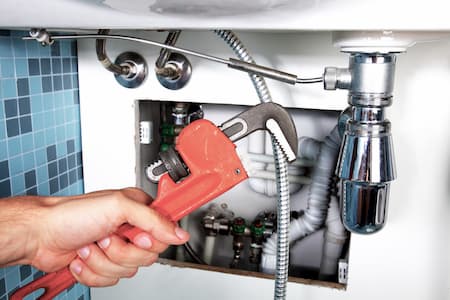Determining When You Should Do It Yourself and When You Should Contact Qualified Plumbing Services
Determining When You Should Do It Yourself and When You Should Contact Qualified Plumbing Services
Blog Article
Just about everyone has got their private theory on the subject of When to Call a Plumber? DIY or Professional Help.

Intro
Pipes problems can vary from minor aggravations to major migraines, often triggering home owners to choose between taking on the issue themselves or calling a professional plumbing technician. Recognizing when to do it yourself and when to look for expert help can save time, money, and stop possible calamities. This write-up discovers the variables to consider when making this crucial choice.
Advantages of Do It Yourself Pipes
Handling plumbing tasks on your own can be fulfilling in a number of ways, particularly for simpler tasks.
Intricacy of Tasks
Some pipes problems call for specific knowledge and devices past regular home owner capabilities. Messing up intricate issues can lead to further damage and costly fixings.
Security Concerns
Collaborating with pipes systems includes risks such as exposure to water damages, potential for electric risks, and managing devices improperly. Security preventative measures have to be observed to prevent accidents and guarantee efficient repair work.
Indicators to Call an Expert Plumbing Professional
Identifying when a plumbing issue exceeds DIY capabilities is important to avoid aggravating issues.
Signs of Complex Concerns
Instances include:
Trigger professional treatment is required to address these problems properly and reduce damages.
DIY Pipes Tips
For successful DIY pipes, it's necessary to be prepared with the right devices and follow correct procedures.
Standard Tools and Materials
Secret tools for DIY plumbing:
Step-by-Step Guides
Clear directions make sure risk-free and efficient DIY fixings:
Selecting the Right Time to DIY
Figuring out when to deal with plumbing tasks yourself needs analyzing both the intricacy of the issue and individual comfort levels.
Analysis Checklist
Consider:
Price Savings
Do it yourself plumbing tasks often conserve cash by avoiding professional service fees. Jobs like dealing with minor leaks, replacing taps, or setting up new showerheads are examples where home owners can take care of repair services without hiring a plumbing professional.
Ability Improvement
Participating in do it yourself pipes supplies a possibility to find out and boost useful skills. Basic jobs equip home owners to understand their pipes systems much better and acquire confidence in handling small fixings separately.
Risks of Do It Yourself Pipes
While DIY tasks provide advantages, specific dangers should be very carefully considered prior to attempting repair work.
When to Definitely Call an Expert
Particular situations require immediate skilled attention to avoid substantial damage or safety and security hazards.
Emergency Situations
Examples consist of:
Finding and Hiring a Professional Plumbing
Selecting a certified plumbing technician ensures trustworthy service and satisfaction in resolving pipes problems.
Requirements for Selection
Elements to think about:
Price Evaluation: do it yourself vs. Expert Providers
Contrasting the monetary implications of do it yourself initiatives versus specialist pipes services assists in making notified decisions.
Financial Considerations
Assess:
Final thought
Making a decision whether to do it yourself or call a professional plumbing technician depends upon comprehending the complexity of pipes concerns and personal capabilities. By evaluating the benefits and threats, house owners can make enlightened selections that promote reliable maintenance and secure their homes from plumbing disasters.
DIY vs. Professional Plumbing Repairs: When to Call a Pro
When dealing with plumbing issues or embarking on renovation projects, homeowners have to decide whether or not they want professional help with their home’s plumbing system. While master plumbers can complete just about any plumbing project, they can cost a pretty penny. On the other hand, DIY plumbing projects can very quickly go awry, which can make things worse.
In this blog, we’ll explore common plumbing projects that homeowners can confidently tackle, provide insights into the essential tools needed, and discuss critical DIY mistakes to avoid. Understanding these distinctions not only helps in maintaining the efficiency and longevity of your home’s plumbing system but also ensures safety and cost-effectiveness in your repair endeavors.
Installing/Replacing Certain Plumbing Fixtures
Most homeowners should be able to install new plumbing fixtures or replace old ones that are damaged or old. Using basic tools, you should be able to effectively:
Replace faucet washers or cartridges Replace showerheads Install a new toilet seat Hook up new appliances Replace hose bibbs Unclogging Drains
You should also be able to fix any clogged drains within your home by using a plunger, plumber’s snake, or natural solutions like baking soda and vinegar. These can often clear clogged sinks or bathtubs without needing professional drain cleaning assistance.
Fixing Running Toilets
Another plumbing issue many homeowners may be able to handle is a running toilet. Toilets may run more than they should due to a faulty flapper or float inside the tank. Toilet replacement parts are easy to find and often come with easy-to-follow instructions.
Repairing Leaky Faucets
A dripping faucet can not only be an annoyance, but it can also be a waste of water. Leaky faucets can normally be fixed with basic tools and a basic understanding of how they work, making them easy to fix.
Adjusting Water Heater Temperature
If you are able to follow basic safety precautions, you should be able to adjust the temperature on your hot water heater, which can improve your home’s energy efficiency and also increase comfort.
Fixing Minor Leaks in Pipes
For small plumbing leaks, particularly ones at pipe joints, using plumbing tape or a patch kit can be a temporary fix while you decide on a more permanent solution. Repairing broken pipes, however, can be more difficult and may require professional attention.

I hope you enjoyed our article about . Thanks so much for taking a few minutes to read through our blog post. If you please take the opportunity to distribute this content if you enjoyed it. Kudos for being here. Come back soon.
Visit My Website Report this page